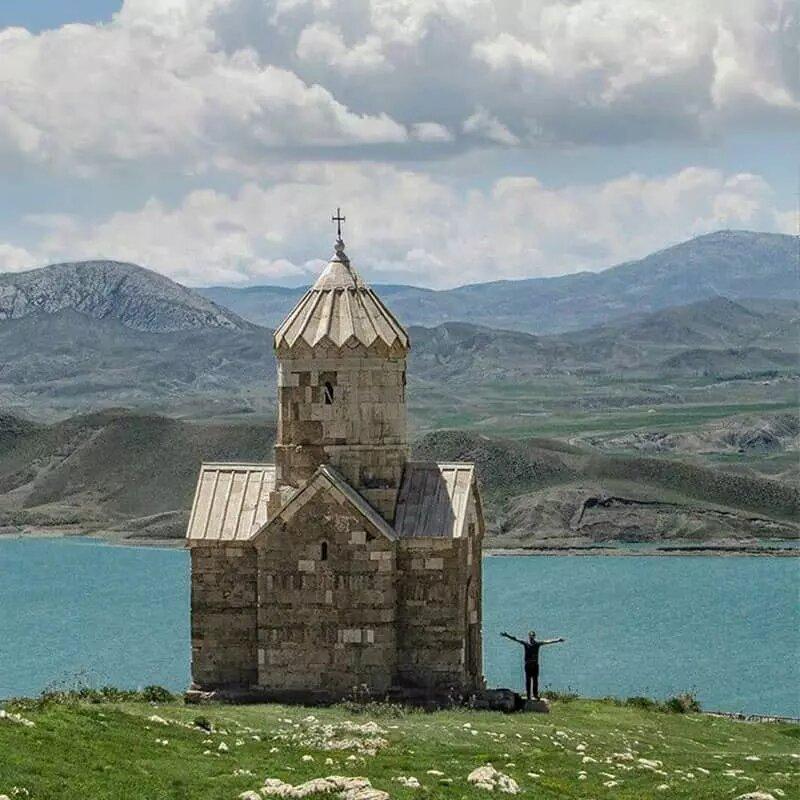Zor Zor Chapel, is a lesser-known gem that captivates visitors with its historical significance and architectural beauty.
The monument is situated twelve kilometers northwest of the UNESCO-designated Saint Thaddeus Monastery, in proximity to Baron Village, approximately twenty kilometers from Maku.
The architecture of Zor Zor Chapel is a blend of Armenian ecclesiastical design and the natural beauty of its surroundings. The centuries-old chapel has a modest yet attractive façade, crafted from stones with windows along its walls leading to pointed barrel vaults supported by false columns. The building, resembling a cross in shape, is rectangular and has the appearance of a prayer hall.
Measuring seven meters in length, five meters in width, and standing at a height of twelve meters, the chapel features a dome with sixteen grooves, four arches beneath it, and an additional four surrounding it. Four attics adorn the sides of the walls, complemented by four interior rooms.
The entrance gate, positioned on the western side, is crafted from metal with ornate cross-like patterns. Notably, the stones are intricately arranged and interlocked, concealing the mortar between them from view. Cross forms are also engraved on the stones, adding a unique touch to the chapel’s aesthetic.
As mentioned by Visit Iran, the chapel derives its name from the Armenian bishop Hovanes Yerznkatsi, also known as Tsortsoretsi, who was a literary figure and educator.
Zor Zor Chapel faced submersion due to the operation of Baron Dam in 1988. Through collaborative efforts between the Armenian society and experts from the then Cultural Heritage, Handicrafts, and Tourism Organization of Iran, the chapel underwent restoration and reconstruction to reclaim its former glory.
In accord with the Armenian Apostolic Church, Iranian authorities relocated the structure 600 meters in 1987-1988, responding to the decision to construct a dam on the Zangmar River.
This strategic move prevented the chapel from being submerged in the dam reservoir. The resulting lake, formed behind Baron Dam, not only preserved the chapel but also contributed to the breathtaking scenery, enhancing the overall beauty of this historical site.
Armenian Monastic Ensembles of Iran
The UNESCO-registered Armenian Monastic Ensembles of Iran, in the northwest of the country, consists of three monastic ensembles of the Armenian Christian faith: St Thaddeus and St Stepanos and the Chapel of Zor Zor.
These edifices – the oldest of which, St Thaddeus, dates back to the 7th century – are examples of outstanding universal value of the Armenian architectural and decorative traditions.
According to the UN cultural body, they bear testimony to very important interchanges with the other regional cultures, in particular the Byzantine, Orthodox, and Persian. Situated on the southeastern fringe of the main zone of the Armenian cultural space, the monasteries constituted a major center for the dissemination of that culture in the region.
They are the last regional remains of this culture that are still in a satisfactory state of integrity and authenticity. Furthermore, as places of pilgrimage, the monastic ensembles are living witnesses of Armenian religious traditions through the centuries.


